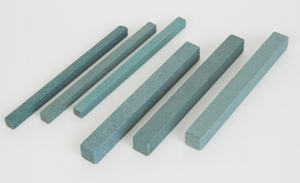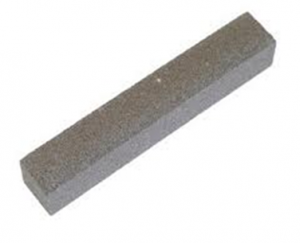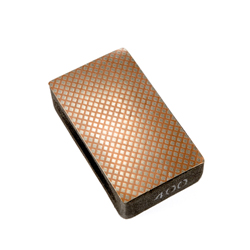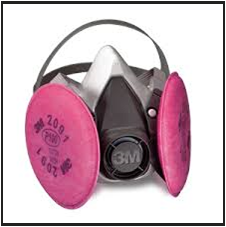A base is like a frame. It accentuates the sculpture. It is important to select a base that is not too busy or large for the sculpture. You don’t want to take attention away from your masterpiece. You want to have a stable base but sometimes it looks best if the sculpture overhangs its support. On the other hand, the “footprint” of the sculpture should be at least and generally not much more than 1-1.5″ from the edges of the base. As a very general rule, the height of the base should not be more than 1/3 the height of the sculpture. The base can be granite, irregular stones, steel, plexiglass wood (I like ebony stained walnut), etc.
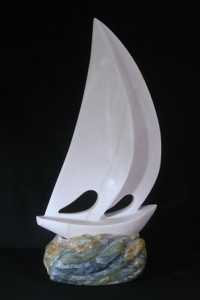
©2015 Ken Miduch
This is an art, not a science, so each case is different.
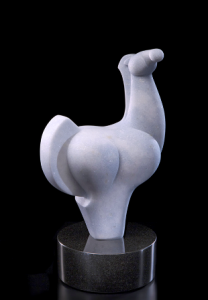
©2015 E. Woodbury
Here is the detail methodology of “basing”:
• Get a flat and level surface to work upon
• Determine sculpture position; secure and hold it
• Mark bottom level line
• Cut bottom; check for flatness (might use a tile)
• On larger bases, cut out center of the bottom to make flattening easier
• Determine hole location in sculpture bottom (find center with a pebble)
• Drill hole with hammer or core drill (consider the bedding plane)
• Determine hole in base: mark sculpture footprint on the base or cut out a template (cardboard or masonite); mark “up”
• Drill base
• Decide on pins: stainless steel or turning pin: gluing one or both sides or using threaded connectors. Consider the ultimate weight of the piece.
• Put non-scratch feet base or adjustable feet on larger pedestal
• Proudly display sculpture




